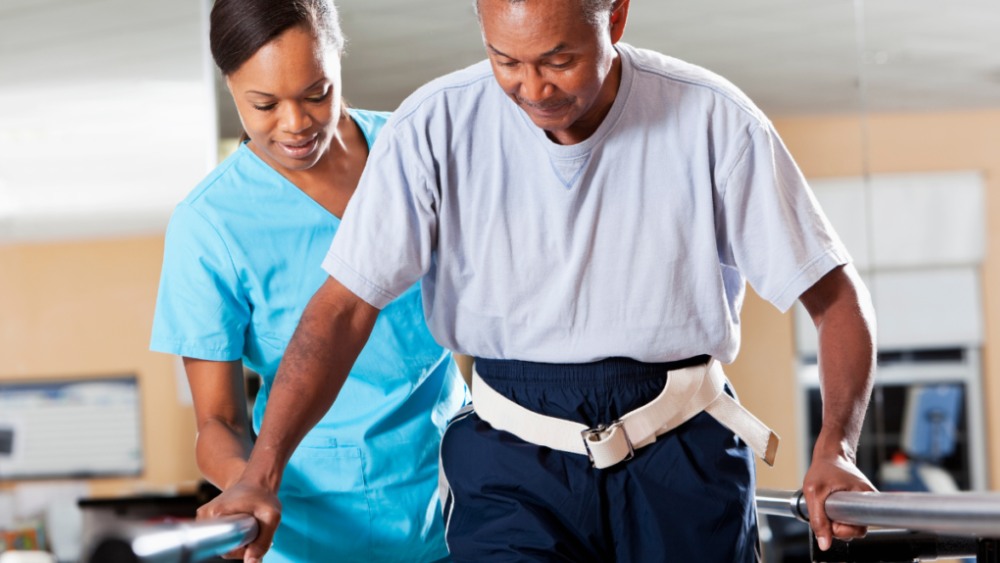Caregivers and healthcare providers are often tasked with assisting patients with mobility challenges. Whether transferring patients from bed to chair, helping them walk, or supporting them during physical therapy, the physical demands on caregivers can be significant. A gait belt is an essential tool that not only enhances patient safety but also reduces the physical strain on those providing care.
1. Understanding Gait Belts and Their Purpose
A gait belt is a wide, adjustable belt typically made of durable fabric or webbing, designed to be worn around a patient’s waist during transfers or mobility assistance. The belt provides a secure and controlled hold, allowing caregivers to assist the patient in maintaining balance, walking safely, and being moved from one position to another with reduced risk of injury.
Used primarily in physical therapy, nursing homes, hospitals, and home healthcare settings, gait belts are an invaluable tool in preventing falls, improving patient confidence, and most importantly, reducing the risk of injury for both patients and caregivers.
2. Reducing Physical Strain for Caregivers
Caring for patients with mobility issues often requires lifting, repositioning, or supporting a patient’s weight, which can be physically taxing for caregivers. Over time, this can lead to musculoskeletal injuries, particularly in the lower back, shoulders, and arms, which are common areas of strain during manual patient handling.
By using a gait belt, caregivers can significantly reduce the amount of physical effort needed to support a patient. The belt allows caregivers to use their body mechanics more effectively, reducing the strain on their own muscles and joints. Instead of having to lift or bear the weight of the patient directly, the gait belt allows the caregiver to guide and support the patient with a secure grip, using their legs and core muscles, which are stronger and less prone to injury.
In this way, gait belts help prevent caregiver fatigue and reduce the risk of long-term injuries, ensuring that caregivers can continue to provide effective care over time without compromising their own health.
3. Enhancing Safety for Patients
While gait belts are vital for reducing strain on caregivers, they also play an essential role in enhancing patient safety. Transfers, especially for patients with limited mobility, can be risky. Without proper assistance, patients are at greater risk of falling or injuring themselves, which can result in serious complications, particularly for the elderly or those recovering from surgery.
The gait belt provides the caregiver with a firm but gentle grip, helping to stabilize the patient during transfers or walking. This reduces the risk of falls and provides the patient with a greater sense of security, knowing they are being safely supported. The use of a gait belt also allows the caregiver to position themselves in a way that minimizes the risk of accidental injury to both the patient and themselves.
4. Benefits of Gait Belts in Healthcare Settings
In healthcare facilities, where patient mobility is a constant concern, gait belts are a critical piece of equipment. Nurses, physical therapists, and home healthcare aides use gait belts as part of their daily routine to ensure the safety and comfort of their patients. Here are some of the key benefits of using gait belts in healthcare settings:
- Injury Prevention: Gait belts provide a secure grip during transfers, reducing the risk of falls and injuries.
- Improved Patient Confidence: Patients feel more secure when they are supported by a gait belt, which can improve their willingness to participate in therapy or mobility activities.
- Reduced Caregiver Injury: The belt allows caregivers to use proper lifting techniques and minimizes strain on their body.
- Easy to Use: Gait belts are simple to apply and remove, making them ideal for both long-term care settings and home care situations.
- Versatile: Gait belts can be used for a wide range of patient needs, from basic walking assistance to full transfers from bed to wheelchair.
5. How to Properly Use a Gait Belt
Proper use of a gait belt is essential for ensuring both the caregiver’s and patient’s safety. Here’s a step-by-step guide to using a gait belt correctly:
- Position the Belt: Place the gait belt around the patient’s waist, ensuring it is snug but not too tight. It should sit securely around the patient’s midsection, just above the hips.
- Secure the Buckle: Fasten the belt securely, making sure the buckle is positioned at the front for easy access.
- Assist the Patient: Stand behind or beside the patient, placing one hand on the belt and the other on their body for added support. Use your legs, not your back, to help lift or guide the patient.
- Maintain Proper Posture: Ensure you maintain a stable posture by bending your knees slightly and using your legs to lift, rather than your back.
- Remove the Belt: After the transfer or assistance, remove the gait belt carefully, ensuring the patient remains steady and secure.
6. Conclusion
Gait belts are a simple yet essential tool in caregiving and healthcare. They play a vital role in reducing strain on caregivers by promoting better body mechanics and providing a secure hold during patient transfers. In addition to benefiting caregivers, gait belts significantly enhance patient safety and confidence, reducing the risk of falls and injuries. Whether in a hospital, nursing home, or home healthcare setting, gait belts are invaluable tools that ensure both caregiver and patient safety during mobility assistance tasks.

